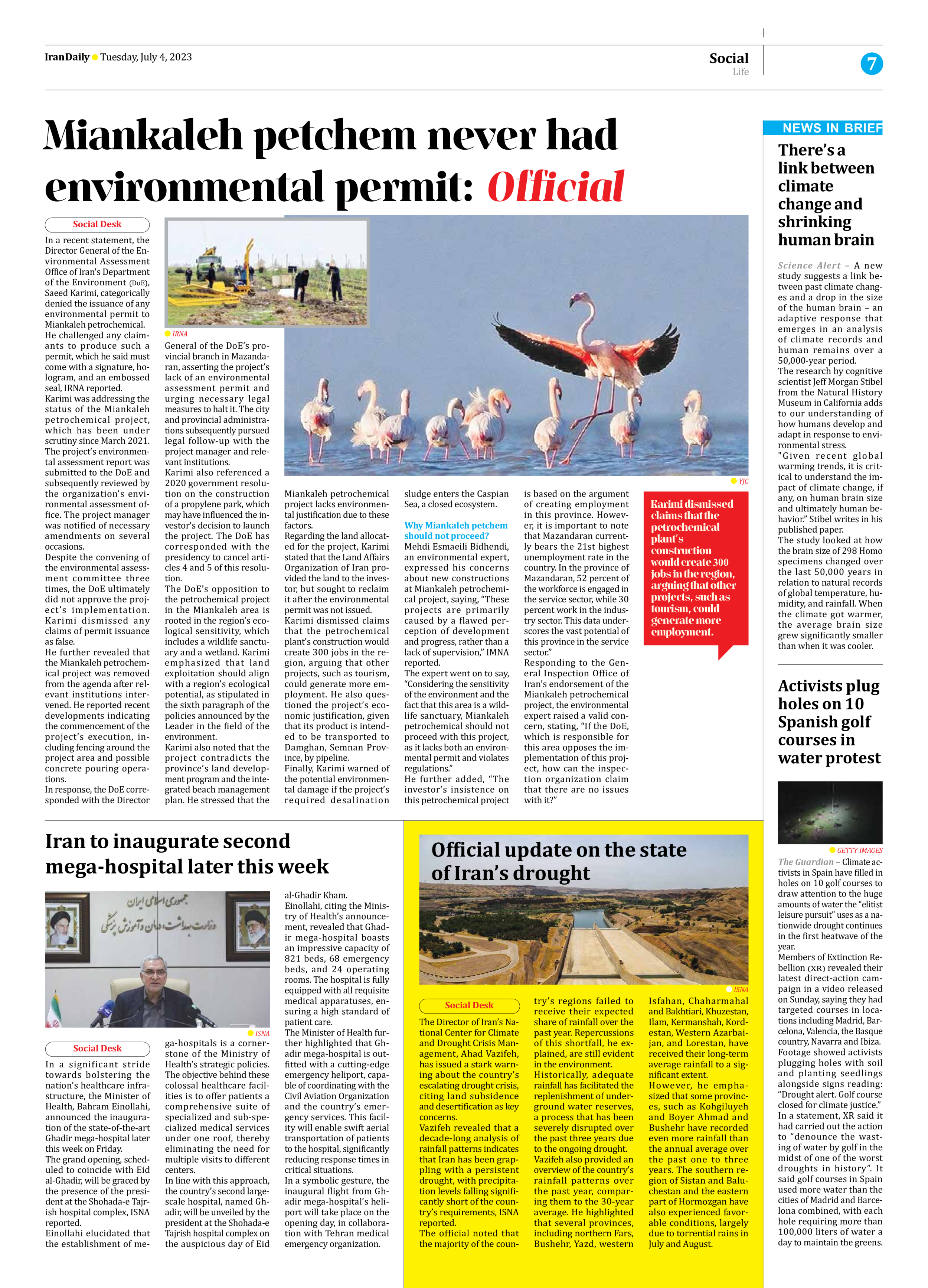
Official update on the state of Iran’s drought
The Director of Iran’s National Center for Climate and Drought Crisis Management, Ahad Vazifeh, has issued a stark warning about the country’s escalating drought crisis, citing land subsidence and desertification as key concerns.
Vazifeh revealed that a decade-long analysis of rainfall patterns indicates that Iran has been grappling with a persistent drought, with precipitation levels falling significantly short of the country’s requirements, ISNA reported.
The official noted that the majority of the country’s regions failed to receive their expected share of rainfall over the past year. Repercussions of this shortfall, he explained, are still evident in the environment.
Historically, adequate rainfall has facilitated the replenishment of underground water reserves, a process that has been severely disrupted over the past three years due to the ongoing drought.
Vazifeh also provided an overview of the country’s rainfall patterns over the past year, comparing them to the 30-year average. He highlighted that several provinces, including northern Fars, Bushehr, Yazd, western Isfahan, Chaharmahal and Bakhtiari, Khuzestan, Ilam, Kermanshah, Kordestan, Western Azarbaijan, and Lorestan, have received their long-term average rainfall to a significant extent.
However, he emphasized that some provinces, such as Kohgiluyeh and Boyer Ahmad and Bushehr have recorded even more rainfall than the annual average over the past one to three years. The southern region of Sistan and Baluchestan and the eastern part of Hormozgan have also experienced favorable conditions, largely due to torrential rains in July and August.







